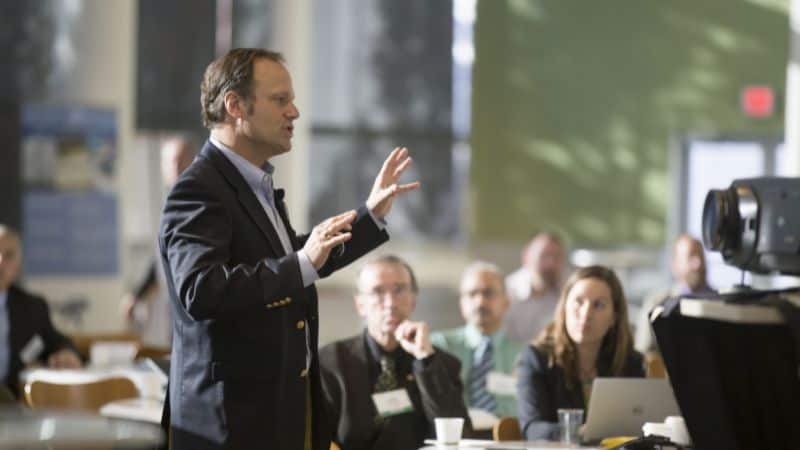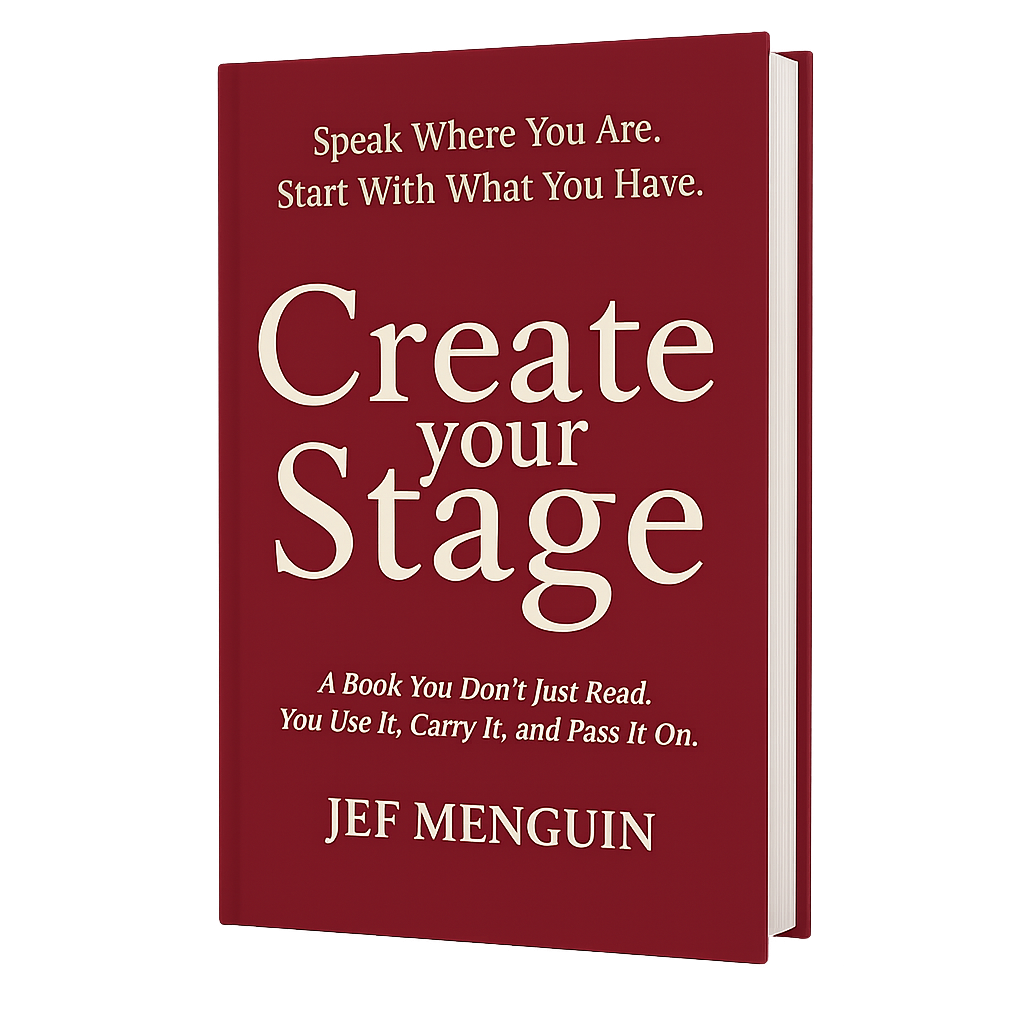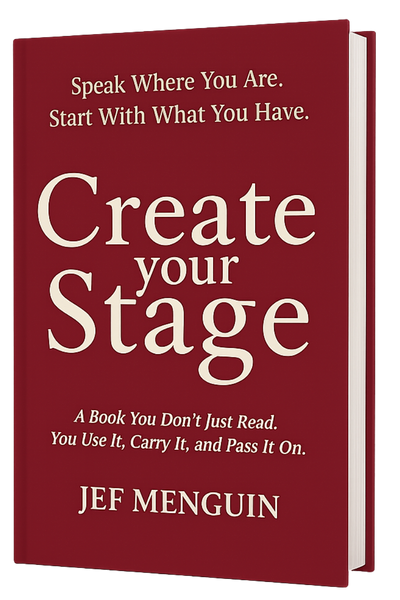A few years ago, I was invited to speak at a regional conference for educators. The organizers told me, “Just talk about motivation—our teachers need inspiration.”
So I prepared a rousing talk on goal-setting, vision boards, and the science of motivation. My slides looked sharp. My stories were polished. I thought I was ready.
When I got on stage, the teachers were polite. They smiled. They clapped at the right moments. But as I scanned the room, something felt off. I wasn’t connecting.
During the break, I sat with a small group and asked them directly: “What’s really on your minds?”
One teacher looked me in the eye and said, “Honestly, sir, we don’t need more motivation. We’re exhausted. We need hope that the system will support us, not just slogans about working harder.”
That hit me like a punch to the gut. I had prepared for the wrong conversation.
The truth? I hadn’t listened before I spoke.
Why Listening Comes First
Most speakers think preparation means crafting the perfect content: outlining ideas, polishing slides, rehearsing lines. But real preparation starts with listening.
When you listen first, you:
- Uncover hidden fears and hopes your audience carries.
- Understand their level of knowledge so you can meet them where they are.
- Customize your message so it feels like it was made for them.
When you don’t listen, you risk “storytelling in the dark.” You’re aiming your message blindly, hoping it lands. Sometimes it does. Most times, it doesn’t.
Listening before you speak is what transforms your words from performance into resonance.
Step 1: Know Their Motivations and Concerns
Every audience has a set of invisible drivers—what excites them, what scares them, what keeps them awake at night. Your job is to uncover these drivers.
Example
- If you’re speaking to frontline employees, they may care less about “strategy” and more about “how will this affect my workload?”
- If you’re addressing executives, they may care less about “process” and more about “how will this impact our bottom line?”
Same topic, different audience, different angle.
How to Do It
- Research: Read what they’re reading. Look at their newsletters, social media groups, industry updates.
- Conversations: Call two or three representatives before your talk. Ask, “What challenges are you facing right now?”
- Observation: If possible, watch them in action. Nothing reveals concerns like seeing people at work.
Exercise: The Hot Buttons Map
Draw three circles: What excites them? What frustrates them? What scares them?
Fill in at least three items for each circle.
This map becomes your compass. If your message doesn’t touch at least one of these buttons, it won’t resonate.
Step 2: Assess Their Knowledge and Expectations
One of the most common mistakes speakers make is assuming the audience knows what you know—or cares about what you care about.
I once coached a scientist preparing for a TED-style talk. His slides were filled with equations, technical jargon, and acronyms. Brilliant content—but his audience was high school students. They would have been lost in the first five minutes.
We worked together to strip down the language. Instead of “bio-photovoltaic efficiency,” he said, “turning plants into solar panels.” Suddenly, the audience leaned in.
Clarity isn’t dumbing down. It’s meeting people where they are.
Questions to Ask Yourself
- What’s their level of knowledge? Are they beginners, intermediates, or experts?
- What’s their appetite for my ideas? Are they open, skeptical, or resistant?
- What’s at stake for them? What do they gain or lose if they follow my message?
Exercise: The Fear–Hope Grid
Create a 2×2 grid.
- On the left, list their fears (what they might lose).
- On the right, list their hopes (what they might gain).
Example:
- Fear: “This new process will make my job harder.”
- Hope: “This process will free up time for me to focus on what matters.”
When you frame your message through both lenses, you address resistance before it even surfaces.
Step 3: Customize Your Message
When you know their motivations, concerns, fears, and hopes—you can tailor your message like a tailor fits a suit.
Imagine you’re rolling out a new compensation plan.
- To employees: Emphasize how it benefits them directly.
- To your manager: Highlight how it reflects well on your leadership.
- To executives: Stress how it helps retain talent and save costs.
Same plan. Different stories. Each tailored to what the audience values most.
Generic answers bore. Personal answers stick.
Exercise: Audience Lens Worksheet
Take one message you plan to deliver. Rewrite it for three different audiences:
- Your team.
- Your manager.
- A skeptical client.
Notice how the emphasis shifts—not the truth, but the lens.
Step 4: Build Authenticity and Trust
Resonance isn’t just about relevance. It’s also about credibility. And credibility comes from authenticity.
People listen to leaders who are willing to share not just victories, but vulnerabilities. A personal disappointment, a mistake, or a hard-earned lesson builds more trust than a hundred polished success stories.
Canadian Prime Minister Justin Trudeau once shared how he had to study technical details extensively before debates. He admitted, “I wasn’t the smartest person in the room, but I did the work.” That vulnerability didn’t weaken him—it made him credible.
Authenticity is the shortcut to trust.
Exercise: Vulnerability Inventory
Write down three stories you rarely tell because they reveal weakness or failure.
Now ask: What did I learn? What value does this reveal?
Choose one. Share it in your next talk. Watch how the room shifts.
Step 5: Anticipate Questions and Prepare Responses
The best speakers aren’t the ones who never get challenged. They’re the ones who are prepared when they do.
Before any talk, brainstorm the top five questions your audience might ask. Especially the hard ones. Write your answers in simple, clear language.
For special occasions—like a toast, tribute, or graduation speech—dig into the personal details. Research the person or event. A generic “congratulations” is forgettable. A specific story or insight makes it memorable.
Exercise: Q&A Matrix
On a page, draw three columns: Likely Questions | Strong Answer | Personal Example.
Fill it in.
When you anticipate questions, you show respect. You signal: I thought of you before I thought of me.
The Identity Shift
Here’s the before-and-after:
- Before: “Preparation means rehearsing my content.”
- After: “Preparation means listening to my audience.”
This is the shift from self-centered speaking to audience-centered resonance.
When you prepare this way, your audience feels it. They’ll think: He understands us. She knows what we’re going through. This message is for me.
That’s resonance.
Try This Today
- Choose your next talk, meeting, or presentation.
- Spend 15 minutes filling out:
- Hot Buttons Map
- Fear–Hope Grid
- Q&A Matrix
- Rewrite your first three sentences based on what you discover.
That’s it. Just three tools. But those three can change everything.
Because when you listen before you speak, your audience doesn’t just hear your words. They hear themselves in your words. And that’s when your message starts to move them.
Closing Reflection
Think about the last time you felt truly moved by a speaker. Chances are, it wasn’t because they dazzled you with eloquence. It was because they named your fear, mirrored your hope, or spoke in words that felt like your own.
That’s the power of listening first.
Before you speak, pause. Ask: What do they need to hear? What do they hope for? What do they fear?
If you do, you won’t just craft a better speech. You’ll craft a mirror that shows your audience they matter.
Because the truth is simple: audiences listen most to the people who first listened to them.






